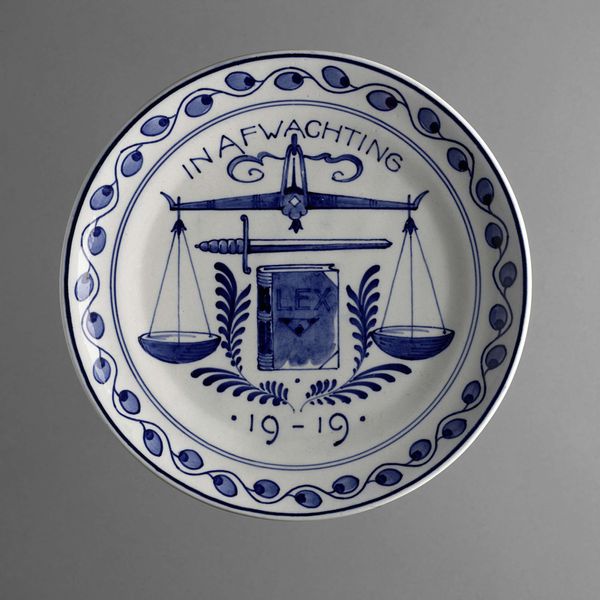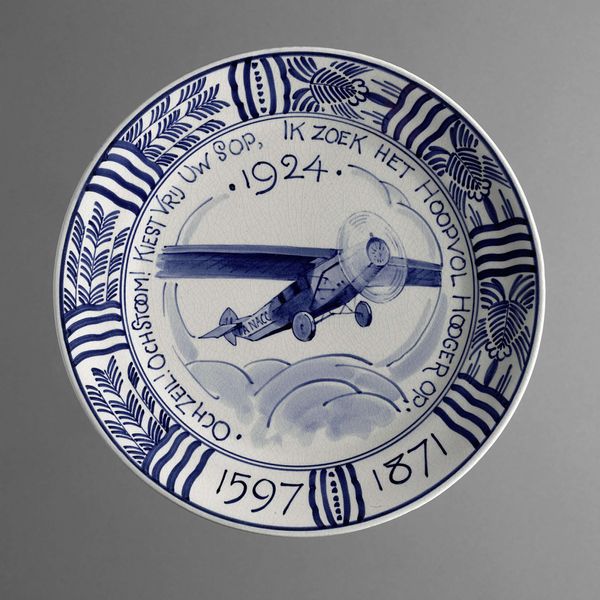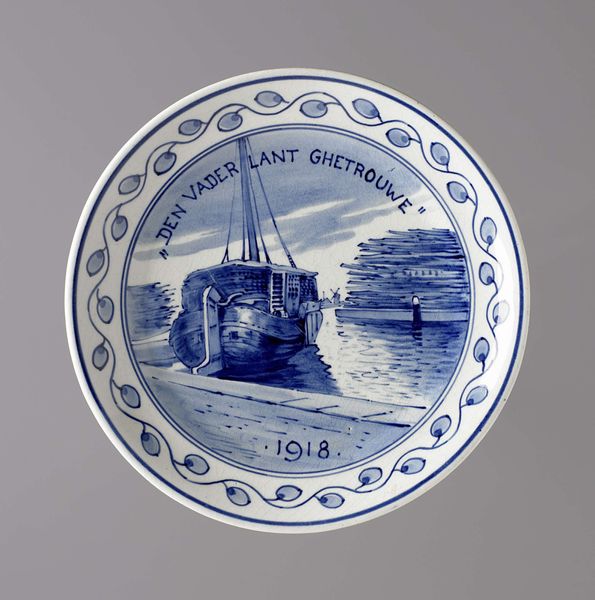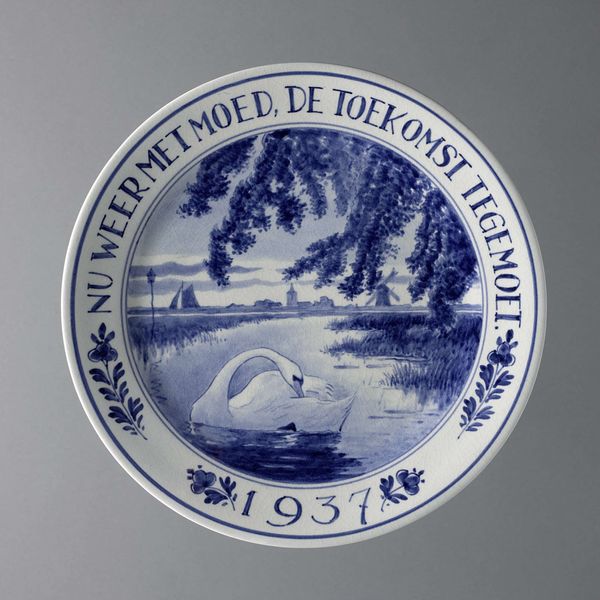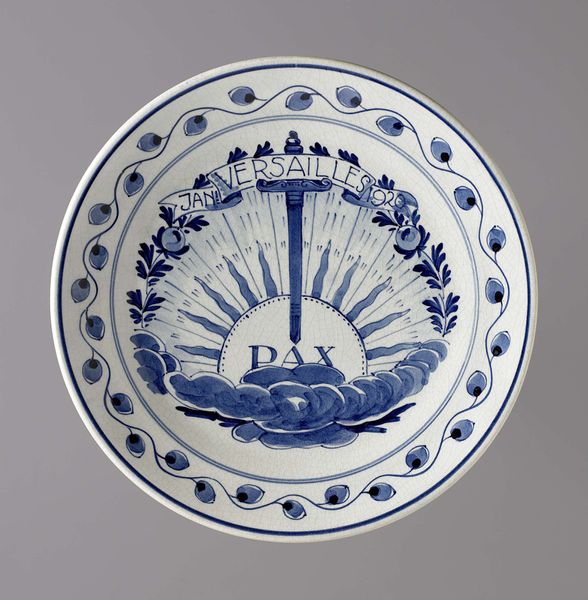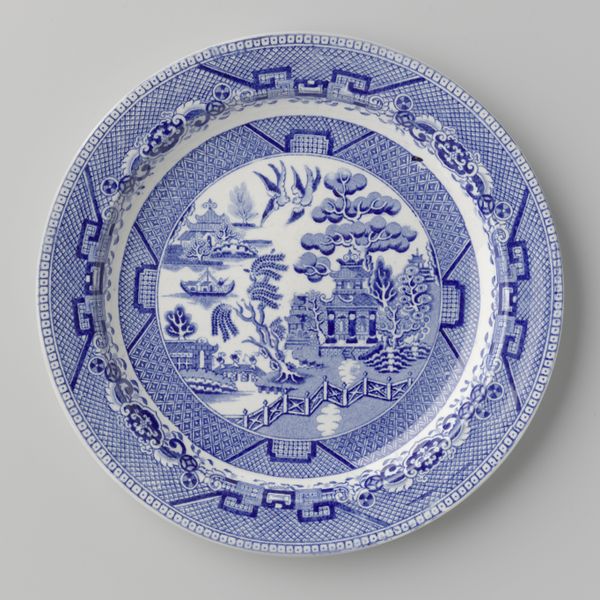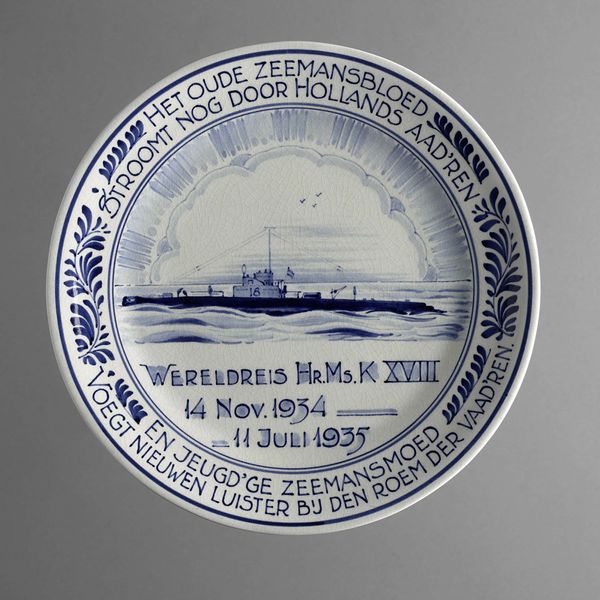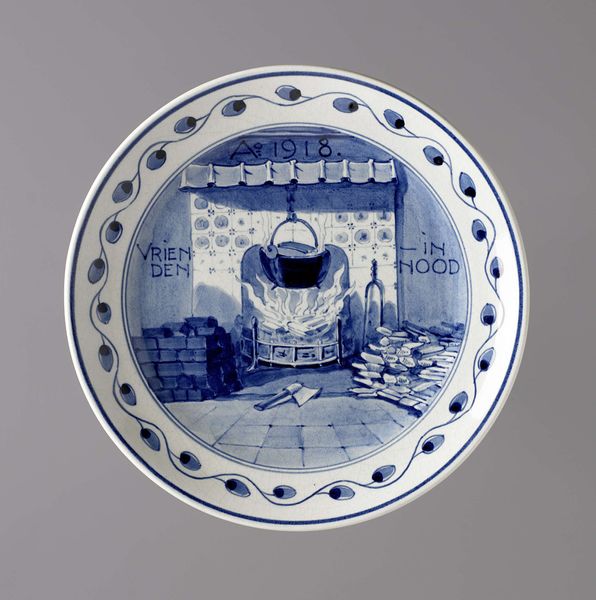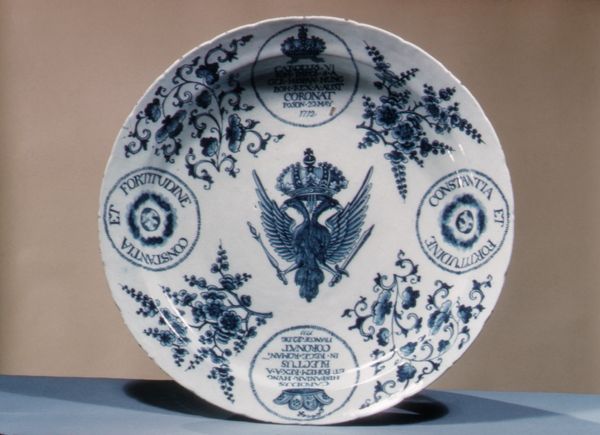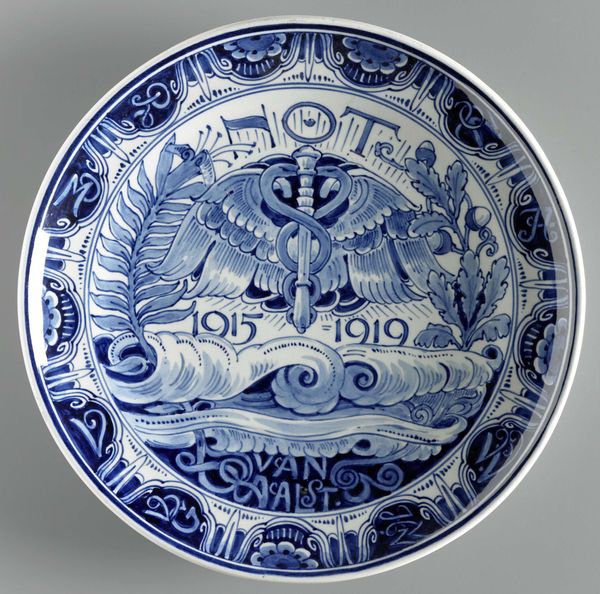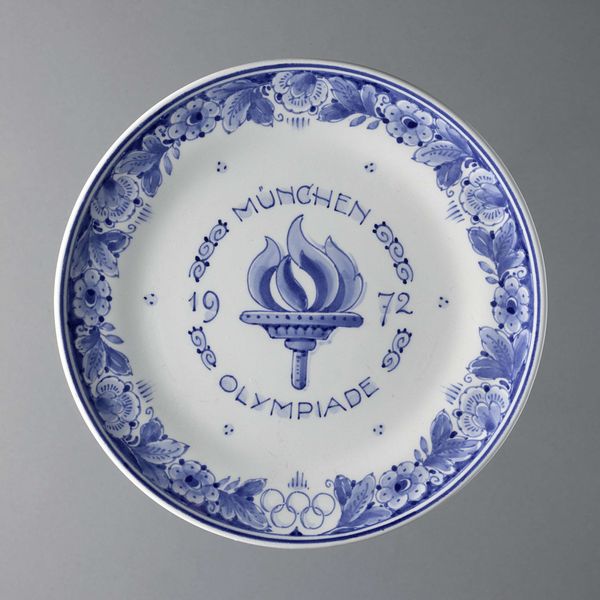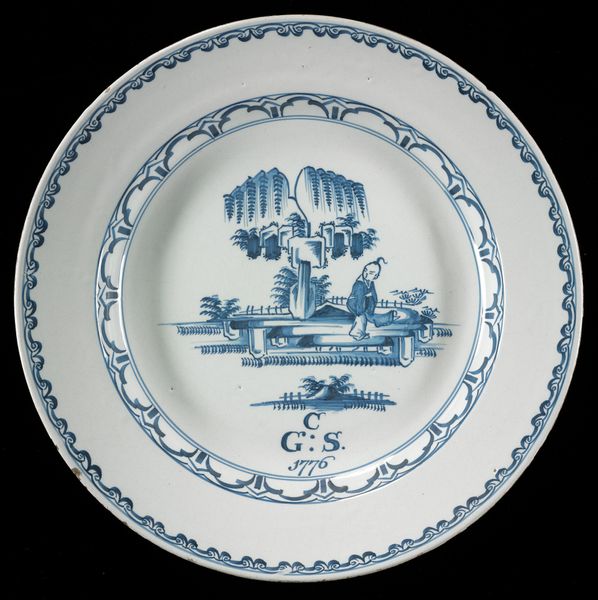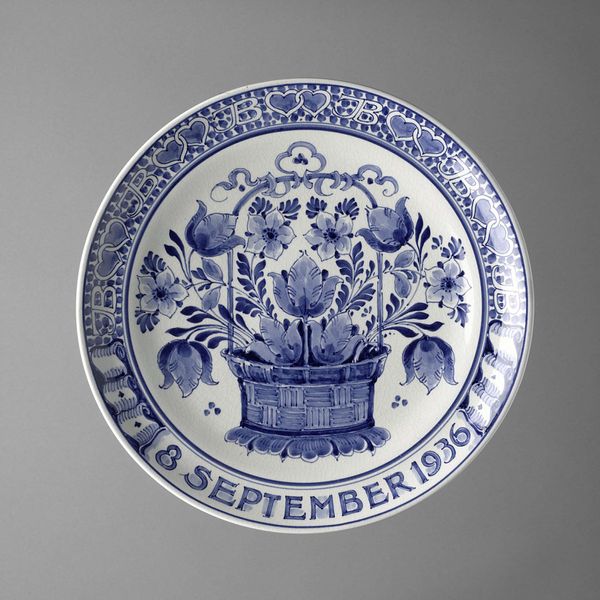
Dimensions: diameter 18 cm, height 2.3 cm
Copyright: Rijks Museum: Open Domain
Curator: We’re looking at “Vlucht met de Pelikaan van de KLM in 1933,” or “Flight of the Pelican of KLM in 1933,” a commemorative plate from 1934 housed here at the Rijksmuseum. It seems like a piece designed by De Porceleijne Fles. Editor: My immediate impression is one of whimsy—it's charming! The Delftware blue, the little airplane floating amongst cartoon-like clouds, it feels so optimistic, and definitely gives me a sense of pride and celebration. Curator: Yes, it really captures the zeitgeist of the early aviation era. It represents technological progress and Dutch ingenuity in that period. What you might find most fascinating, however, is how it functions as a piece of propaganda for KLM, showcasing air travel as modern and accessible. Editor: Precisely. Notice how this is not just art for art’s sake. This plate, using earthenware, signifies something mass-produced for domestic consumption; it's inherently connected to manufacturing and trade and tells us something about social accessibility and cultural values during the rise of commercial air travel. How the plane contrasts the traditional Delftware—intriguing. Curator: Indeed! And the text around the edge provides the entire historical context of this first postal flight. I appreciate how these visual cues would enhance its desirability, feeding directly into consumerism and bolstering the popularity, hence the financial stability of the airline. Editor: Think about what owning one meant: not just possessing beautiful craft, but aligning oneself with progress, perhaps even patriotism! It serves as a material record of cultural attitudes towards technological advancement. That blue coloring and stylized design, that would’ve really signified the new versus tradition in domestic life. Curator: It highlights how cultural institutions participate in constructing and promoting certain narratives around Dutch identity and technological advancement. The plate, therefore, exists in this really interesting intersection of popular art, commemorative object, and historical artifact. Editor: Exactly. By examining the object's history, its place in material culture, we unlock these amazing perspectives about technology and craft, industrial growth and pride and also commercial branding. It’s a reminder that even everyday objects hold meaningful societal reflection. Curator: An exceptional example of art in the service of nation-building, wouldn’t you agree? Editor: Certainly!
Comments
No comments
Be the first to comment and join the conversation on the ultimate creative platform.
